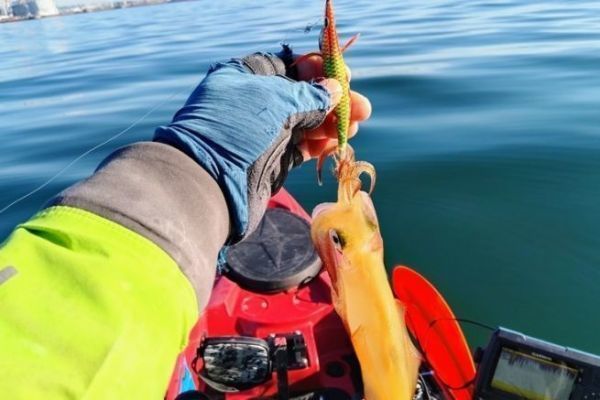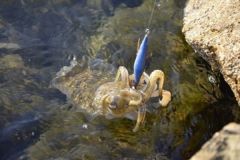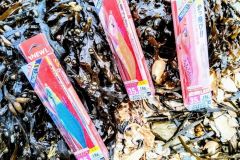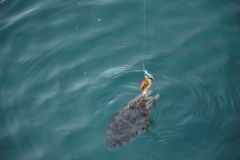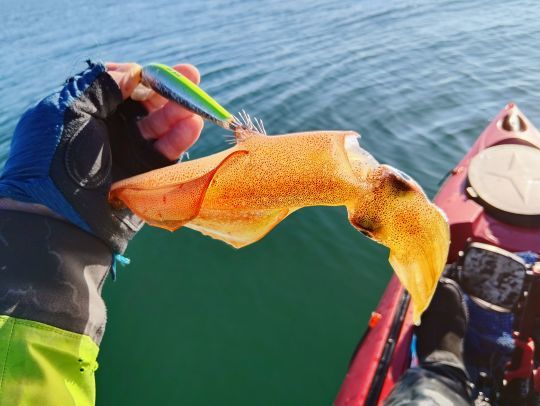
Fishing in winter
It was -2°C when we launched, and we'd gone beyond the usual layer of frost of the last few days. Even the kayak on the water had a light film of frost for the first half-hour. Of course, the winter outfit for this outing was the extreme-cold version. 3 mm long john wetsuit, multi-layer technical clothing, water-repellent overalls, watch jacket with muff and 4 foot barriers. The next stage is the dry suit.
Afterwards, once dressed like this, it was comfortable on the water, provided you moved around a bit, hence my little match between the two different techniques that require you to stepper all the time. It helps to warm up.
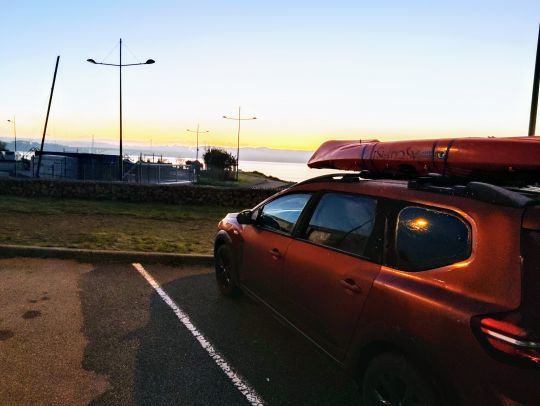
Montage Tataki
The first technique is the traditional Tataki rig, I just changed the jigs, as I explain in the video at the end of the article. I used an Aurie Q double glow with integrated rattle on the bottom and a calmero ultra orange on top. The rig is weighted with a 60-gram pear sinker. As there's no wind and the downward coefficient is 54, the current is weak and this weight is enough to keep the rig close to the bottom. The speed of movement is quite low and it's basically slow trolling. It also serves to keep the fish moving to combat the cold.
Catch after catch, mostly cuttlefish, I'll only make one squid with this technique. All catches will be made on the bottom jig. The cuttlefish are pretty big at the moment, most of them seriously wounded, which suggests that the breeding season has already begun, as it usually does in early spring. As I don't keep them for consumption, they'll all leave after a quick photo...
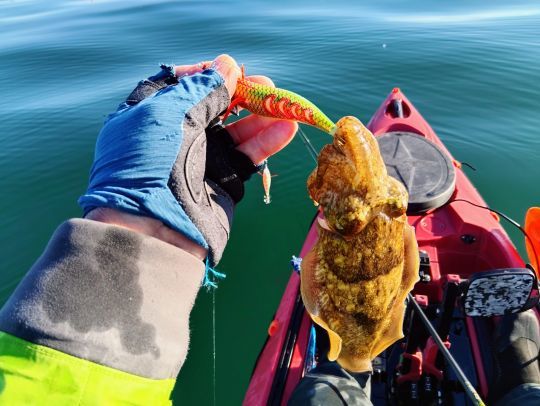
Fast trolling with a bib jig
The second technique is faster trolling with a bib jig used like a swimming fish. I practised this technique on a bottom of 6 to 12 metres, for an hour. I used sea squid jigs. The jigs are 11 cm and 18 gram double basket sinking jigs distributed by Flashmer. The yellow-orange color was a hit. I caught 3 squid with this technique, which leads me to believe that this method selects the intended target well. It's good in winter to be able to target the species and avoid by-catches, so many should take a leaf out of your book.
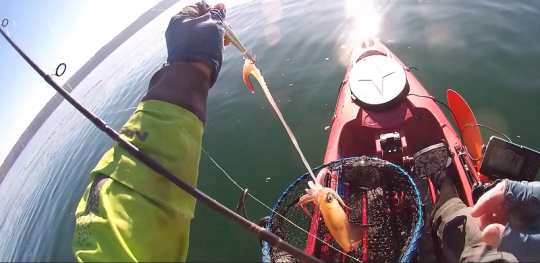
Squid use their hunting tentacles to catch their prey. They prick themselves on moving jigs. There's no need for heavy shoeing and it's a good idea to bring the cephalopod back slowly, otherwise you'll tear off its tentacle, as you can see in the video.
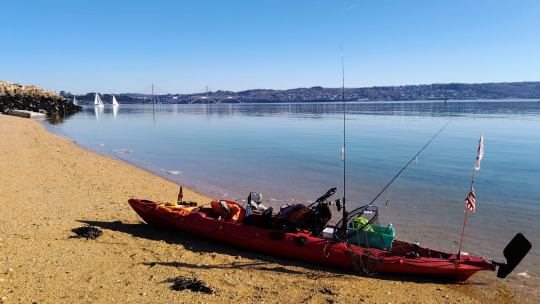
The session ended, as usual, with a good snack on a small beach in the sun, and I even dropped some of my clothes to return to the slipway, as the colors of the harbor were magnificent under the sun that day. That's why we go out on the water!
